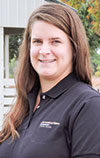With winter feeding costs this year, you may be needing to make some deep culling on replacement heifers. The top three considerations when deciding which heifers to keep are cost, feed resources and genetics.
In years like this, with such a steep increase in input prices, the most important factor to consider is feed cost. Winter feed is the highest cost for most producers, and procuring extra feed for the additional number of heifers can be difficult. It is important to consider that it will be 16 months before heifers produce a calf and another six to eight months before that calf will be sold – meaning your heifer won’t be paying for her feed for another two years. Selling heifers can free up feed resources for cows and bulls, reducing the amount you must raise or purchase.
You should also consider that heifers will need to be fed higher-quality feed than most cows to ensure they reach 65% of their mature bodyweight by the start of the next breeding season. For a mature bodyweight of 1,200 pounds, that means your heifers should weigh 780 pounds by breeding. Heifers weaned at 550 pounds in November must gain a minimum of 1.5 pounds per day to reach that targeted weight by late March. Most importantly, you must analyze the cost of retaining heifers. This would include the cost of winter feed, breeding (if you choose to A.I.), summer grazing, veterinarian bills, etc.
Finally, before buying new herd bulls, you need to consider your heifers. Heifers require bulls with low-birthweight expected progeny differences (EPDs) in order to reduce the risk of dystocia. Purchasing a bull that can breed both cows and heifers and still reach targeted EPDs can be difficult. Eliminating the need for a bull with EPDs targeted for heifers would allow you to purchase bulls with higher EPDs in carcass and growth traits, which may be accompanied by increased birthweights.
For producers who are capable, there are many benefits to buying replacement heifers. Purchasing heifers gives you the opportunity to expand your herd rapidly and change your breeding goals in a shorter period of time. If you are purchasing bred replacements, you want to do so before the heifers are 22 months old or two months prior to their expected calving date.








